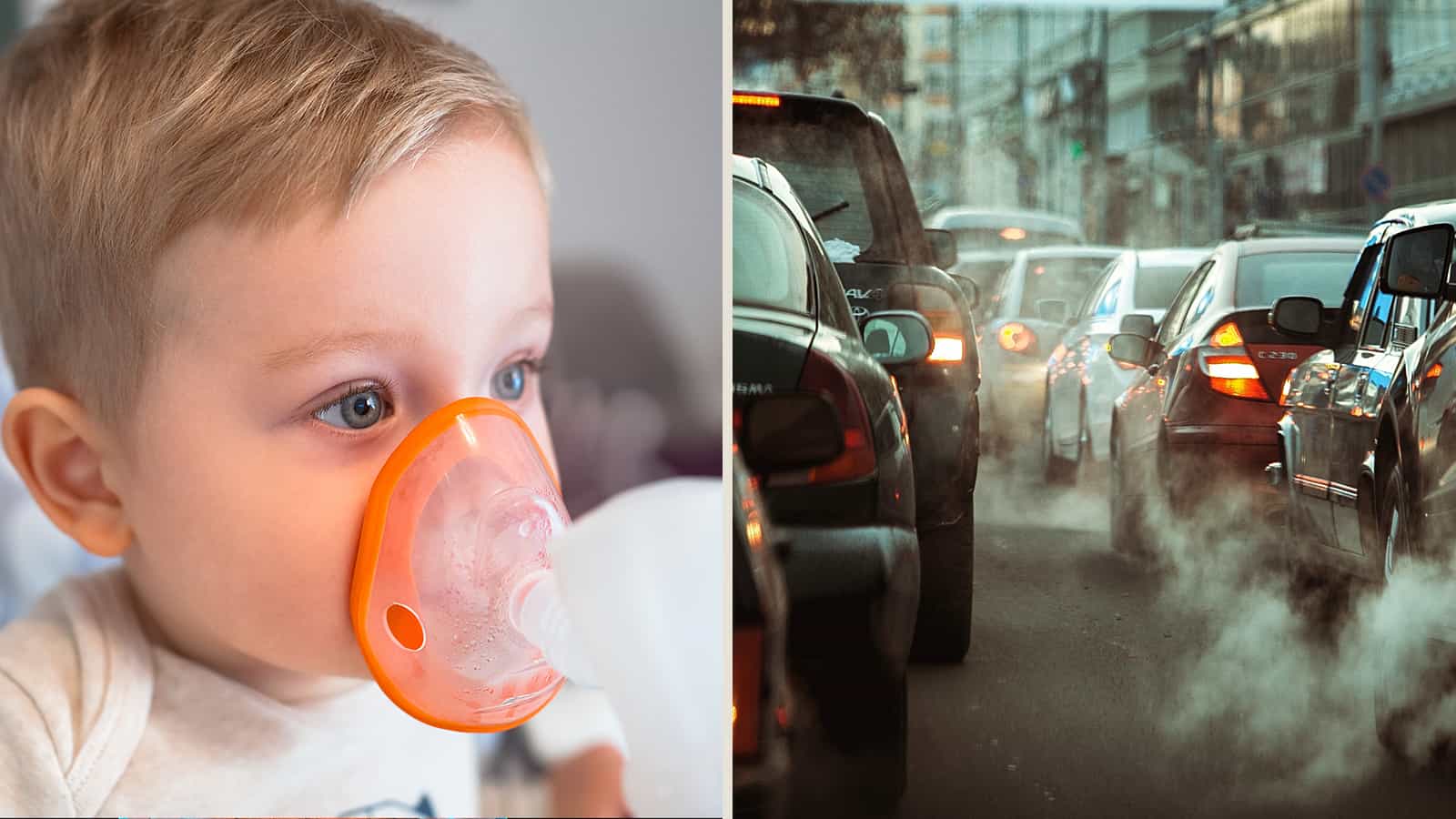A George Washington University study linked rising pediatric asthma cases to traffic pollution worldwide. They estimate that almost 2 million newly diagnosed pediatric asthma cases trace back to air pollution. Smog poses a problem, especially for large cities worldwide, such as Los Angeles and Mumbai.
The study marks the first to estimate the burden of pediatric asthma cases resulting from traffic pollution in over 13,000 cities.
“Our study found that nitrogen dioxide puts children at risk of developing asthma, and the problem is especially acute in urban areas,” Susan Anenberg, a co-lead author of the article and a professor of environmental and occupational health at the George Washington University, said. “The findings suggest that clean air must be a critical part of strategies aimed at keeping children healthy.”
Anenberg and her team wanted to measure ground concentrations of nitrogen dioxide, or NO2, in particular. This pollutant comes from vehicle exhaust, power plants, and industrial locations.
They also tracked new pediatric asthma cases in children from 2000 until 2019.
Study Warns About Traffic Pollution Causing Skyrocketing Pediatric Asthma
Asthma is a long-term illness that causes narrowing and inflammation of the airways. Asthma affects nearly 6.1 million children under 18 in the US.
The research team highlighted these significant findings from the study:
- Two-thirds occurred in cities among the estimated 1.85 million new pediatric asthma cases globally linked to NO2 in 2019.
- However, the number of pediatric asthma cases linked to NO2 in cities declined recently. This reduction probably occurred because of stricter air regulations in higher-income countries, such as the US.
- Air quality also improved in Europe. Unfortunately, pollution is rising in lower-income countries such as those in South Asia, Sub-Saharan Africa, and the Middle East. NO2 pollution, in particular, is a growing problem in these areas.
- Pediatric asthma cases attributed to NO2 pollution endanger public health for citizens in South Asia and Sub-Saharan Africa.
A prior study by the GW researchers discovered that NO2 contributed to around 13% of global pediatric asthma cases. About 50% of these cases occurred in the 250 most populated cities worldwide. People living near congested roadways and industrial sites are at the highest risk of developing asthma.
Overall, the number of pediatric asthma cases associated with NO2 fell from 20% in 2000 to 16% in 2019. This decline means that initiatives to clean the air in Europe and the US have paid off, particularly for children living with asthma.
Of course, there’s more work ahead for both higher-income countries and developing countries. Low-income areas usually find it challenging to lower dangerous vehicle emissions and other sources of NO2 due to costs and technology constraints.
Urban Air Pollution a Growing Problem Worldwide
In another study by Veronica Southerland at GW, Anenberg and colleagues discovered that urban air pollution caused 1.8 million excess deaths in 2019. This study also found that 86% of adults and children living in cities worldwide get exposed to unsafe levels of fine particulate matter. In fact, pollutant levels often exceed the recommendations from the World Health Organization.
Their paper states: “Despite progress in reducing exposure in some countries, the global health burden of ambient fine particulate matter (PM2.5) is increasing annually. Long-term exposure to PM2.5 is associated with premature mortality from various diseases, including cardiovascular disease, respiratory disease, lung cancer, and lower respiratory infection. PM2.5 is now the leading environmental contributor to the global burden of disease, rising from being the fifth leading contributor among environmental risk factors in 1990, in part driven by declines in household air pollution and unsafe water and sanitation.”
“Reducing fossil fuel-powered transportation can help children and adults breathe easier and may pay big health dividends, such as fewer cases of pediatric asthma and excess deaths,” Anenberg said. “At the same time, it would also reduce greenhouse gas emissions, leading to a healthier climate.”
Six Tips to Protect Yourself from City Air Pollution
If you live in a large city, it’s crucial to reduce your exposure to pollution as much as possible. The American Lung Association offers the following guidelines to reduce pediatric asthma:
- Check your local forecasts for daily air pollution levels. This data will tell you if it’s unsafe to go outside or limit your exposure.
- Clean your home regularly to reduce indoor air pollution. Avoid wearing shoes inside, as they can track in contaminants from outdoors. Also, don’t allow smoking indoors, and light candles sparingly.
- Reduce energy usage in your home. All our appliances and modern conveniences run on electricity, creating air pollution. Consider green energy sources like solar to power your home.
- Don’t exercise outdoors when high air pollution is present. Also, if you exercise outside, make sure to avoid high traffic areas. Being around tons of cars will increase your exposure to pollutants.
- Consider wearing a mask while outdoors if you live in a megacity or urban area. It may be uncomfortable, but it will protect you somewhat from heavy pollution and smog.
- Walk or bike instead of taking a car. Globally, transportation accounts for about 15-20% of greenhouse gas emissions each year. If you have to use a vehicle, opt for a bus or carpool with friends. Reducing the number of cars on the road would make a considerable dent in urban air pollution.
Final Thoughts on Study Linking Air Pollution to Pediatric Asthma
A recent study by George Washington University discovered that air pollution contributes to nearly two million pediatric asthma cases per year. About 50% of cases occur in large urban areas. However, in Europe, the US, and parts of Asia, pediatric asthma is on the decline. Researchers believe that tighter air pollution laws have reduced nitrogen oxide levels in the atmosphere.
While this is undoubtedly good news, we still have a mountain to climb to reduce emissions. Another study found that urban air pollution caused nearly two million deaths globally in 2019.
Researchers say that we need to provide a healthy climate if we want healthy populations. Getting fossil fuel-powered cars off the roads would make a huge difference in lowering air pollution.




















